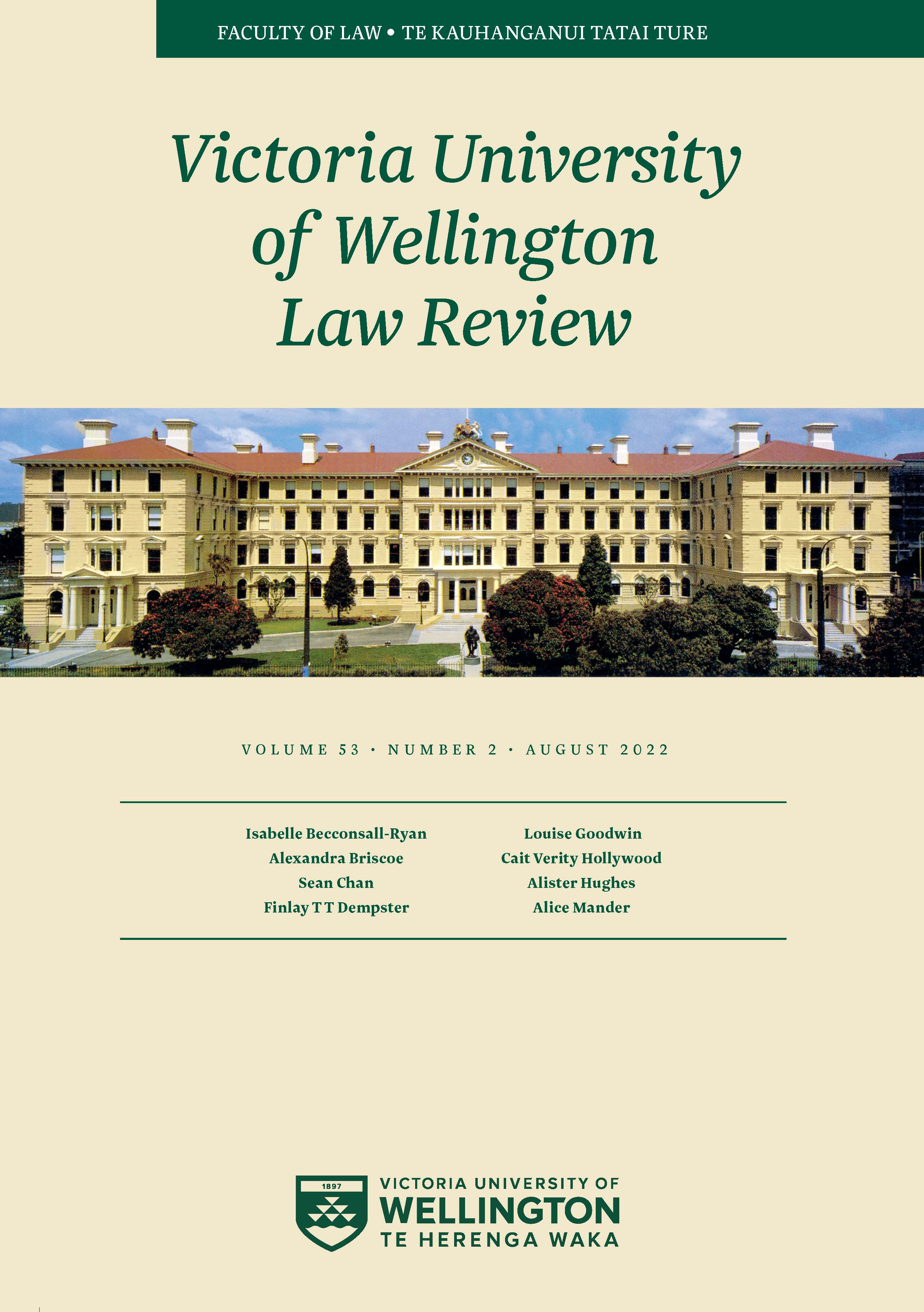The Undisclosed Principal Doctrine: Rationalisations, Justifications and Origins
DOI:
https://doi.org/10.26686/vuwlr.v53i2.7742Abstract
The undisclosed principal doctrine is anomalous in the common law. The doctrine enables a principal to sue and be sued on a contract made by his or her agent with a third party who did not know the principal existed. In so holding, the doctrine appears to fly in the face of fundamental contract law principles. Commentators have provided a range of explanations for the doctrine's existence despite its apparent anomalous nature. This article critically analyses four explanations for the doctrine: the principal impliedly intends to contract with the third party; the principal provides the consideration to support the contract; the doctrine is a primitive form of assignment; and an "intervention thesis" that justifies the doctrine by coupling the consideration justification with the nature of the principal-agent relationship. All four of these theories are found not to withstand analysis. This article then considers a theory that the doctrine evolved out of the foreign principal doctrine in the mid-19th century due to changing customs and practices in international trade. While this theory is found wanting evidentially, this article agrees that the doctrine's origins almost certainly lie in mercantile custom, incorporated into the common law via the law merchant, most likely in the 17th to 18th centuries, from which point it ossified into a standard agency doctrine of general application. The article concludes by suggesting that the doctrine ought simply to be recognised as anomalous and exceptional to the standard rules of contract formation, rather than unconvincingly rationalised or justified on grounds that only act to further reduce its doctrinal coherence.
Downloads
Downloads
Published
How to Cite
Issue
Section
License
Authors retain copyright in their work published in the Victoria University of Wellington Law Review.


